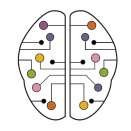St John’s Ward interactions
I got a quick question:
I’ve started taking St. John’s Wort extract with amazing results (treating a mild – moderate depression).Do you know how long before taking MDMA I have to discontinue St. John’s in order not to get into a dangerous situation like serotonin syndrome or spoil the roll?
What about Amphetamines? Are they dangerous whilst on St. John’s (I figured no because they are not acting on serotonin that much)? Are you aware of any other drugs that might be dangerous with St. John’s?
Do just the same rules apply to St. John’s as to any «regular» SSRI in regards to drug use? I have done an extensive research on the internet but couldn’t find an answer
St. John’s Wort is a popular herbal supplement often used to help with depression and anxiety. Some people think that because it comes from a plant, it’s a more natural and healthier option. But it can interact with other drugs and medicines.
St John´s Wort acts like a monoamine oxidase inhibitor. So, theoretically, it could induce severe adverse effects in combination with drugs whose mechanism of action is related to dopamine, norepinephrine and/or serotonin liberation.
This includes MDMA, LSD, amphetamines, cocaine, psilocybin.
The use of ketamine , GHB or cannabis is probably safe .No toxicity has been reported and according the pharmacological mechanisms an interaction does not seem likely. Anyway this combinations are no recommended, as they could worsen or trigger depressive symptoms.
To be safe, it’s a good idea to stop taking St. John’s Wort for a couple of weeks before starting any other new drugs
